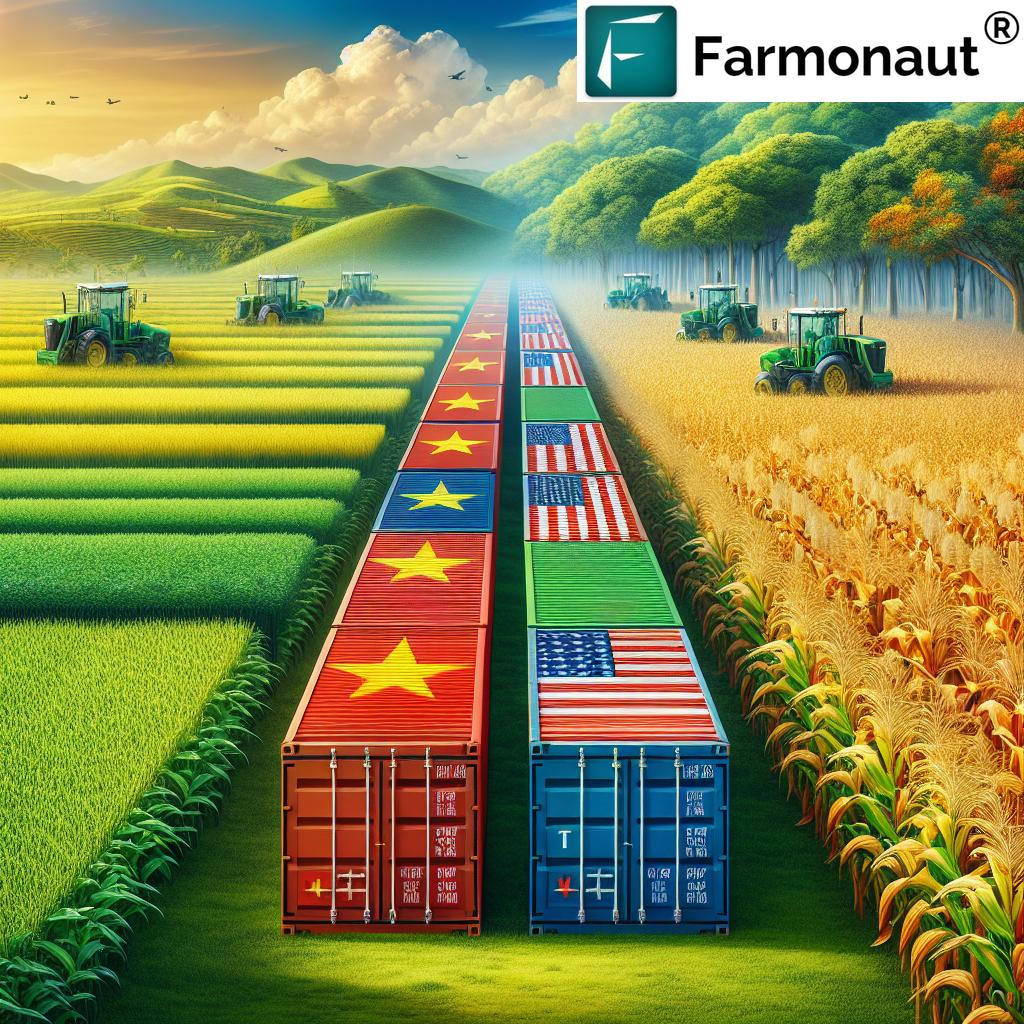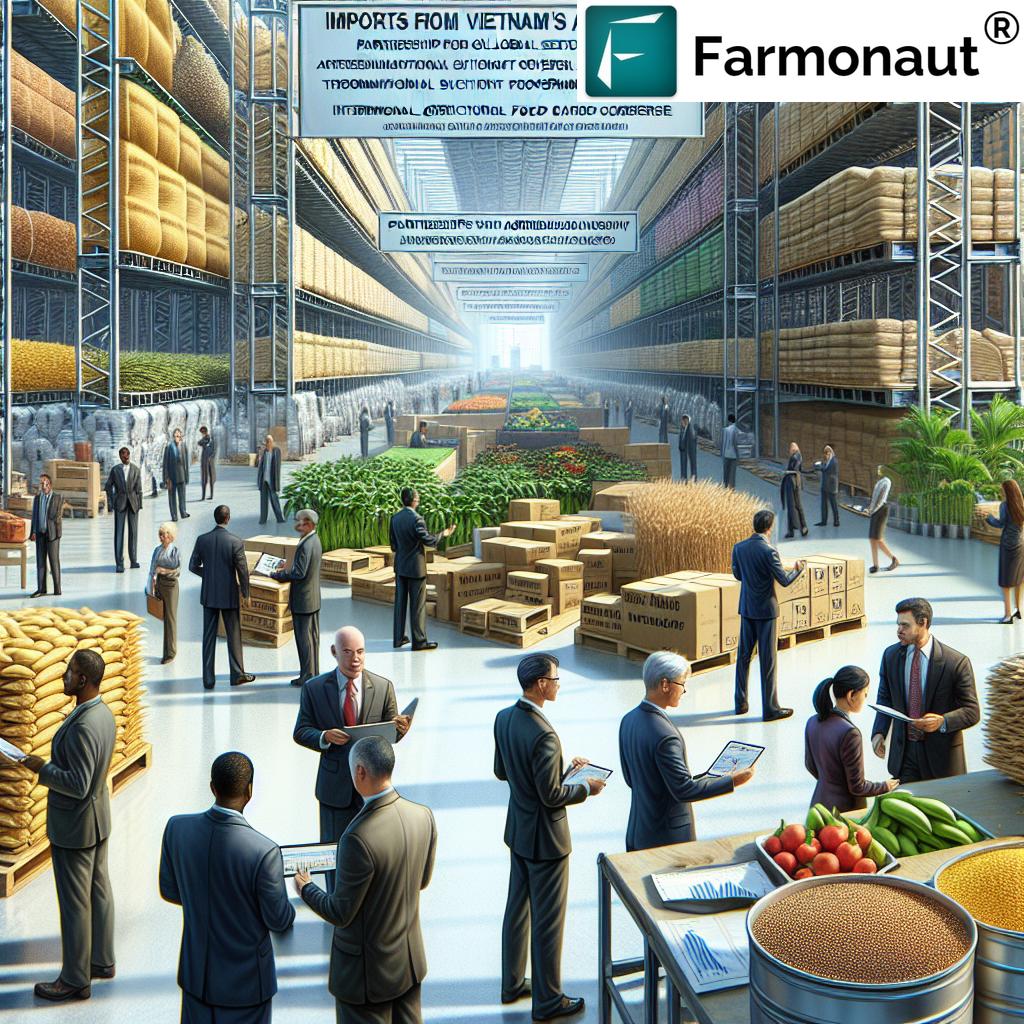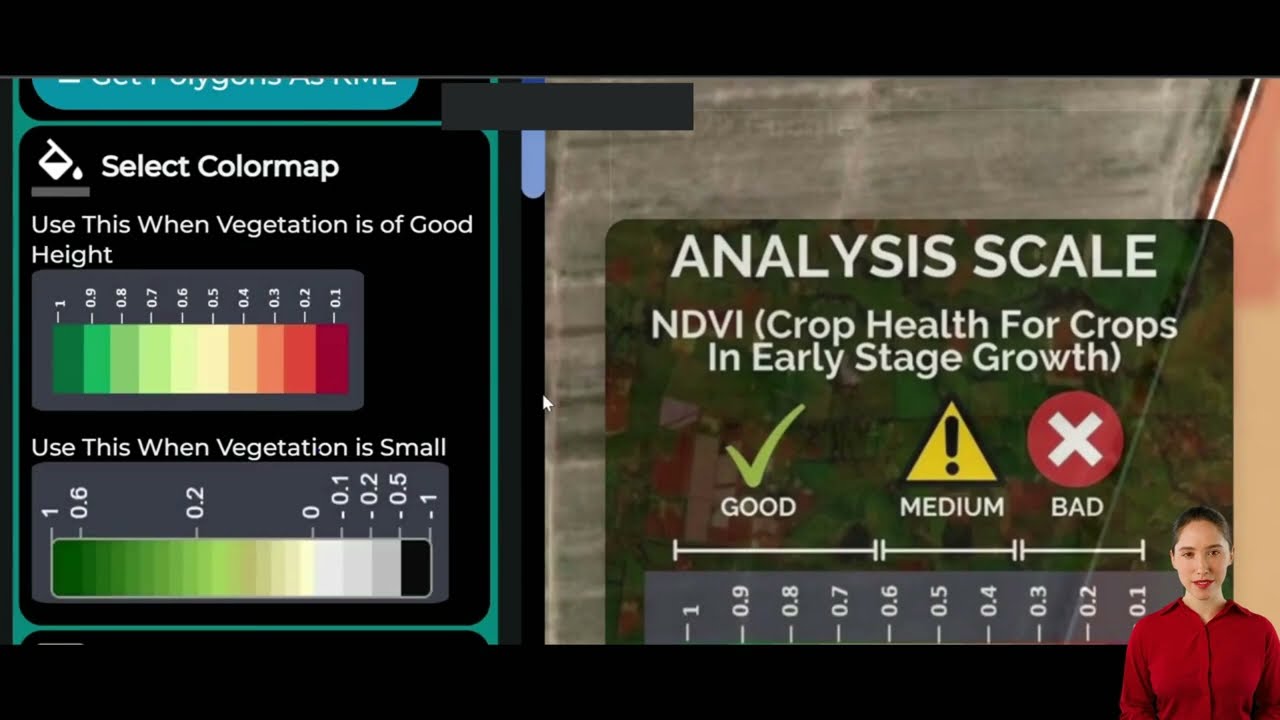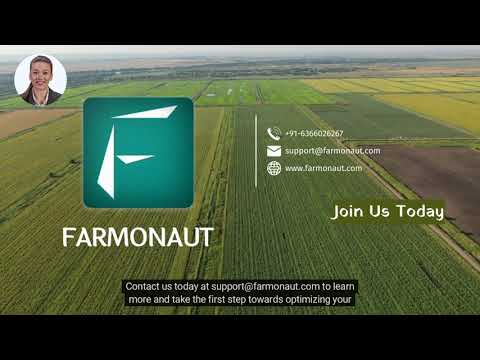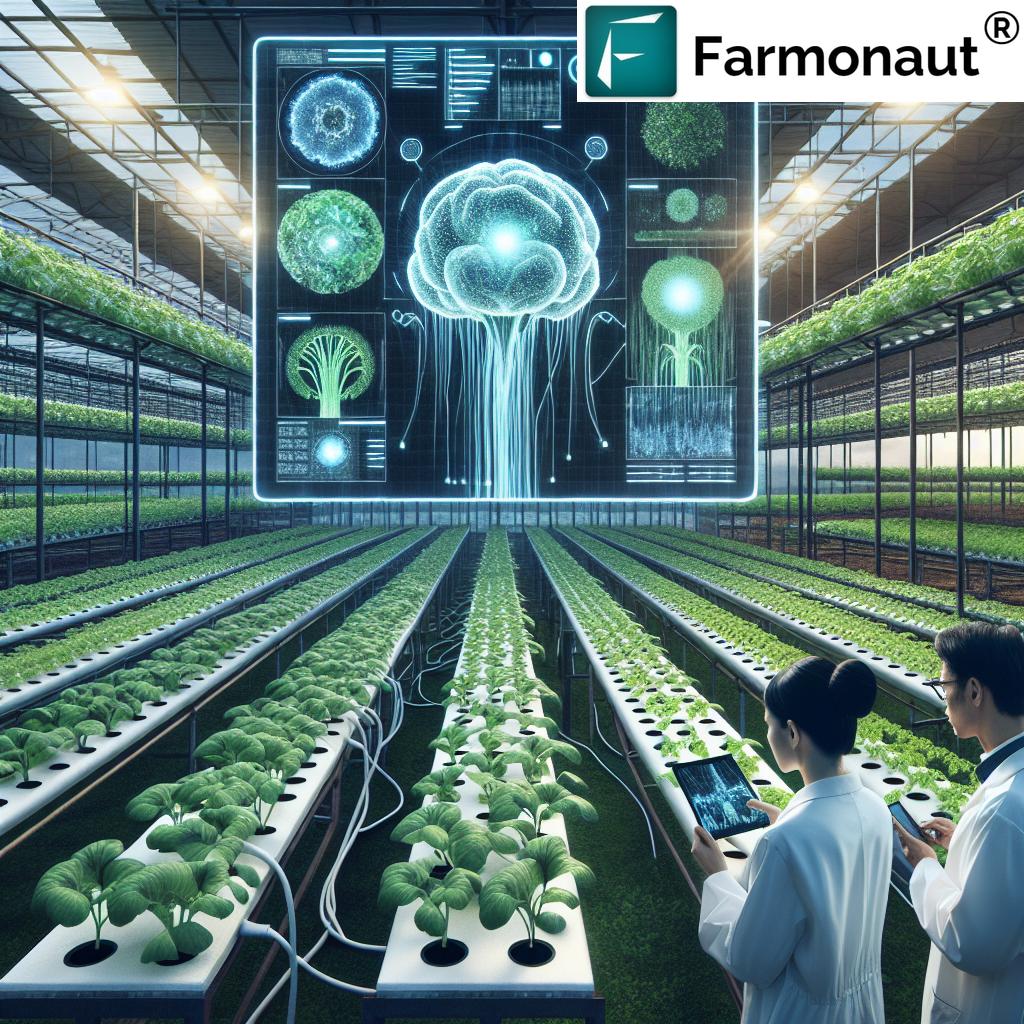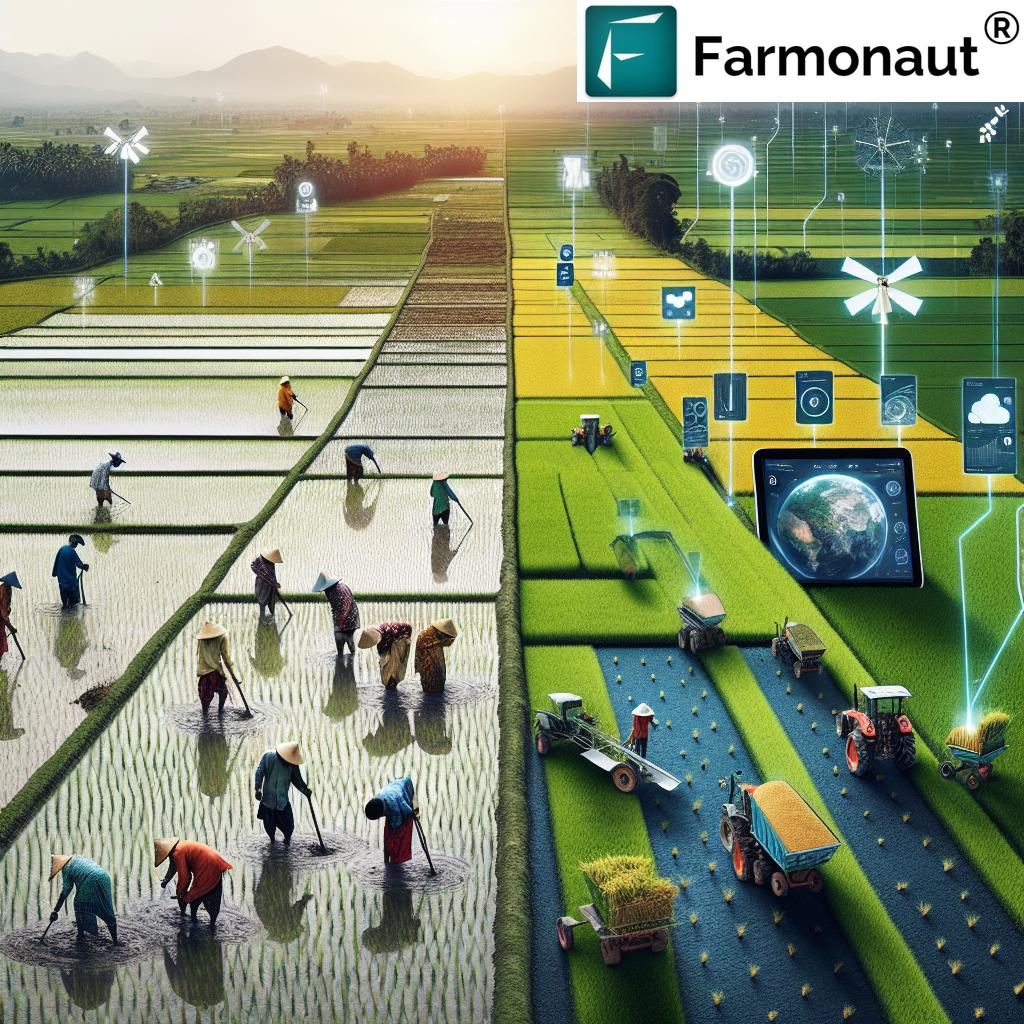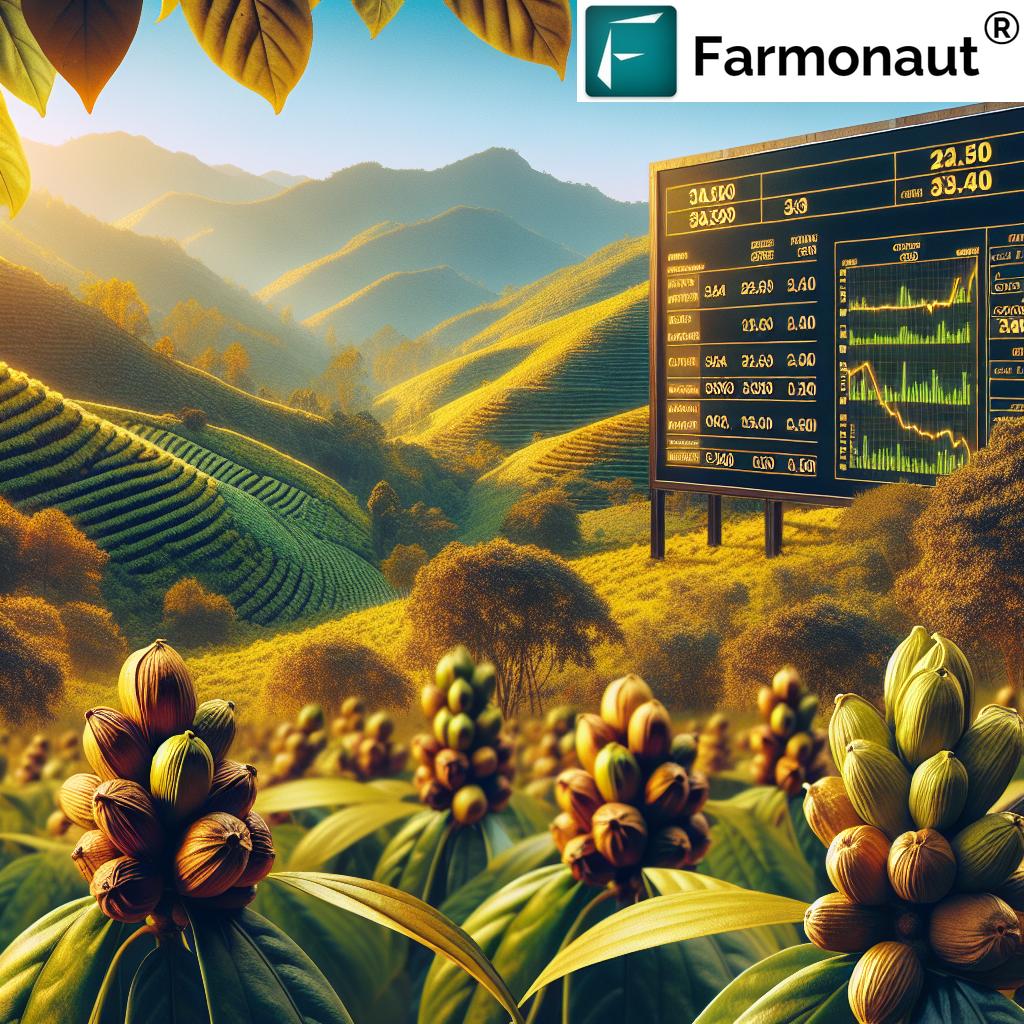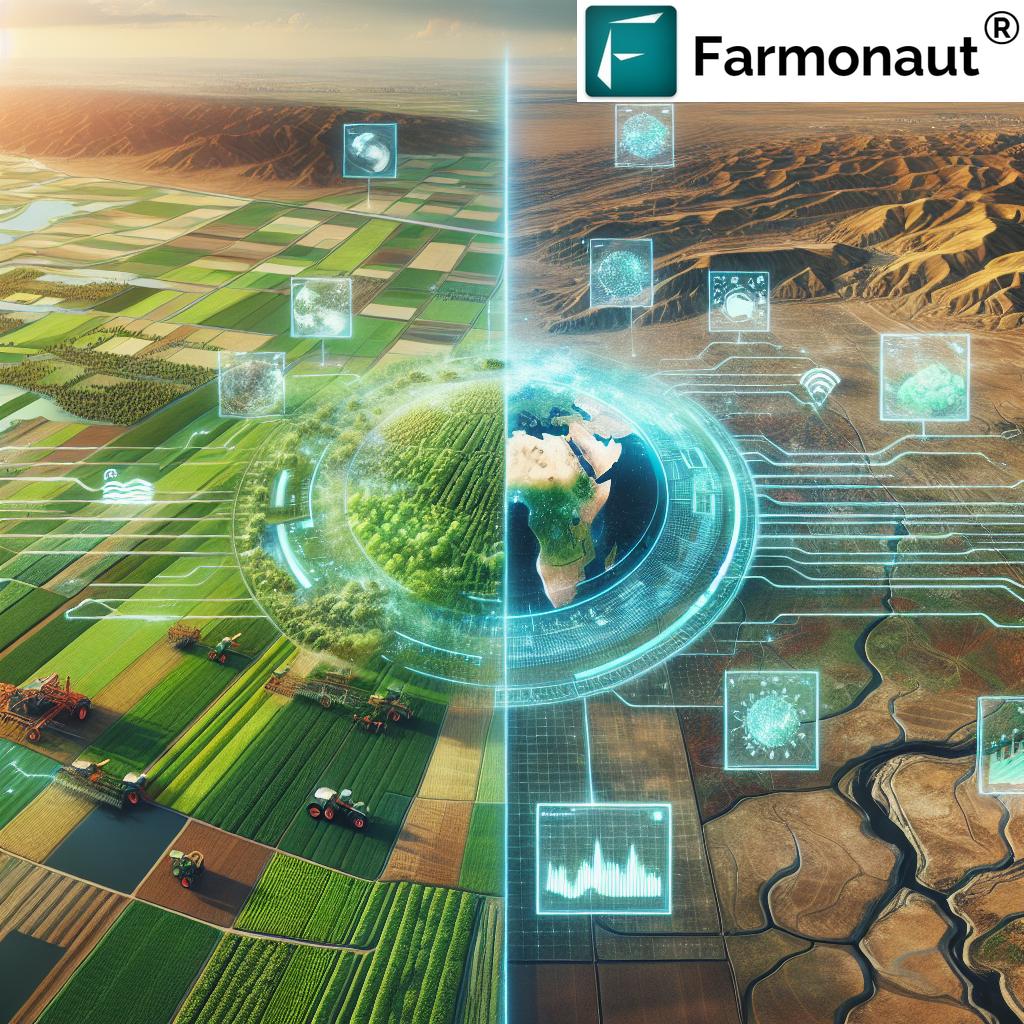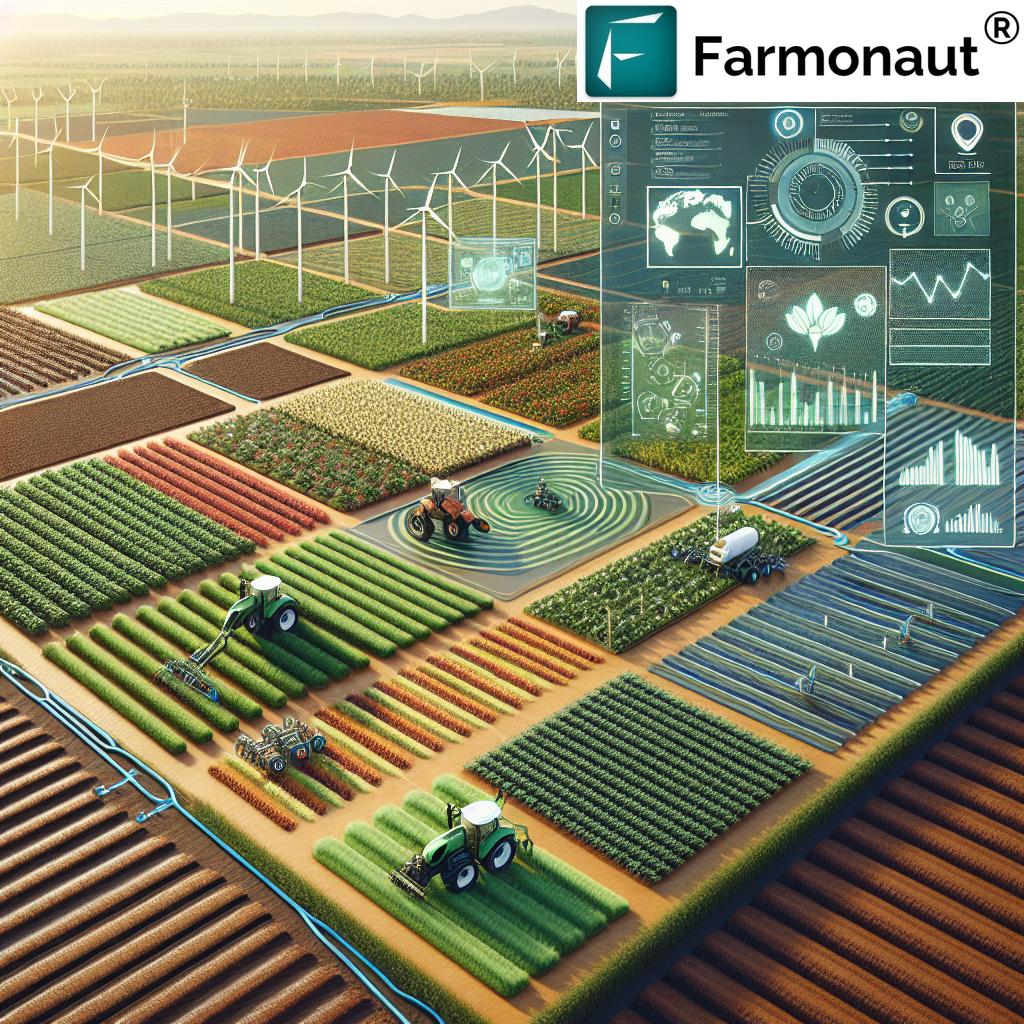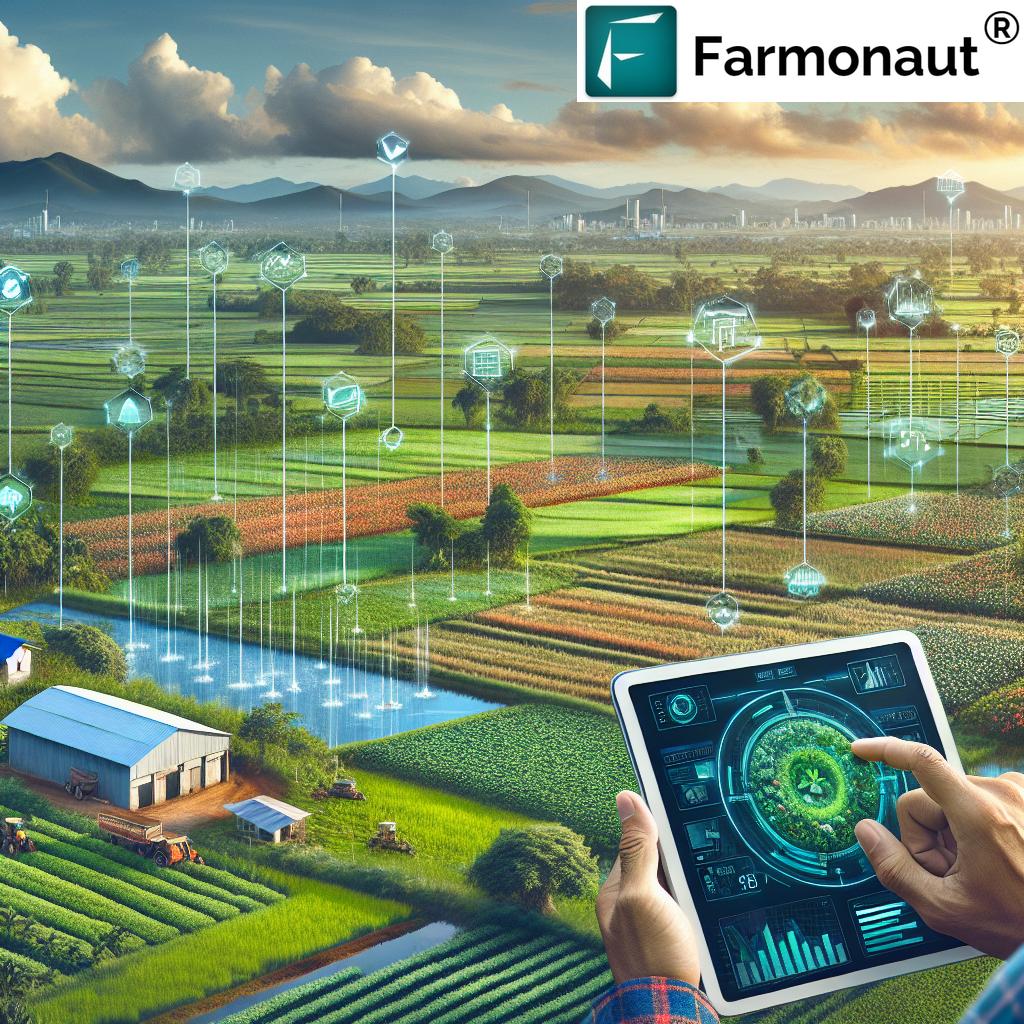Top Methods for Sustainable Agriculture: Unlock Vietnam-US Trade
Introduction
The agricultural relationship between Vietnam and the United States is at a pivotal moment. As both countries celebrate 30 years of diplomatic ties, our focus has turned to unlocking sustainable agricultural growth, optimizing agricultural supply chains, and seizing agri food trade opportunities. In June 2025, a high-level Vietnamese delegation visited the US, spanning Iowa, Ohio, Maryland, and Washington D.C., forging new business dialogues, signing pivotal agreements, and opening doors for innovation in timber product imports and advanced technology access.
This in-depth analysis unpacks these developments, exploring progressive sustainable agriculture methods aimed at ensuring food security and balanced trade. We’ll highlight the role of digital agriculture, advanced monitoring solutions like Farmonaut, and the bilateral momentum driving the future of Vietnam US agriculture trade. From tariff agreements to resource-efficient farming solutions, our journey delves into how government, businesses, agribusinesses, and associations from both countries create a truly interconnected global agricultural sector.
Vietnam US Agriculture Trade: Recent Developments & Trends
The Vietnam US agriculture trade partnership reached a new peak in June 2025. Vietnamese Minister of Agriculture and Environment, Do Duc Duy, led a delegation of nearly 50 agencies, agribusinesses, and associations to the United States. Spanning Iowa, Ohio, and Washington D.C., this strategic visit aimed to reinforce trade ties, particularly in Vietnam agricultural imports of US commodities and timber products.
- Signed 20 MoUs, totaling $3 billion for US agricultural commodities
- Expanded import agreements in animal feed, grain, and timber product imports Vietnam
- Dialogues emphasized supply chain integration, tariff adjustments, and technology transfer
- A clear focus on bilateral agricultural cooperation between countries
The drive for deeper cooperation is clear: Vietnam’s economic expansion and the US’s robust agricultural production are not in direct competition—they are complementary. This synergy enables shared supply chain growth and fosters innovation in both markets.
Comparative Trade Growth: Vietnam-US Agricultural Sector
To fully grasp the pace and scale of bilateral trade, consider how Vietnam US agriculture trade has evolved over the last five years, marked by fast-growing export and import value, shifting tariffs, and pivotal policy milestones.
| Year | Export Volume (Vietnam ➔ US) (Est. Metric Tons) |
Export Value (Vietnam ➔ US) (USD Million) |
Main Exported Products | Tariff Agreements | Notable Supply Chain Developments |
|---|---|---|---|---|---|
| 2020 | 2,300,000 | $3,900 | Coffee, cashew, seafood, pepper | Partial tariff reduction; phase-out on certain goods | Initiatives for logistics upgrades in major ports |
| 2021 | 2,700,000 | $4,800 | Coffee, rice, seafood, fruit | US-Vietnam Agreement on SPS standards | Blockchain pilots in select agri food supply chains |
| 2022 | 3,200,000 | $5,700 | Cashew, pepper, timber, rubber | 70% duty-free under new protocol | Enhanced cold chain and smart logistics |
| 2023 | 3,850,000 | $6,700 | Coffee, timber, animal feed, seafood | Reciprocal tariffs imposed by US (up to 46%) | US-Vietnam pilot digital customs clearance |
| 2024 | 4,000,000 | $8,100 | Coffee, rice, timber, grains, aquaculture | Negotiations on fair tariff agreement; US-Vietnam bilateral summit | Launch of smart supply chain integration and digital platforms |
Tariff Agreements and Their Impact on Agriculture Supply Chains
One of the pillars sustaining Vietnam US agriculture trade has been the evolution of tariff agreements. Our engagement with these policies directly influences supply chain growth and market competitiveness. We’ve witnessed the effects of US-imposed reciprocal tariffs—at times reaching 46%—which impacted both Vietnamese exporters and the price burden on US consumers.
Key Takeaways on Vietnam-US Tariff Agreements
- Trade Facilitation: Over 70% of agricultural products benefit from duty reductions, streamlining agricultural supply chains.
- Recent Challenges: High US reciprocal tariffs on Vietnamese goods have affected trade balance, prompting negotiations for fairer trade.
- Growth Outcomes: Reduced tariffs have made Iowa agricultural exports and Ohio agribusiness partnerships viable for larger markets in Vietnam, while improving competitiveness for Vietnamese farmers.
The recent strategic decision to increase Vietnam agricultural imports of US commodities is a calculated move to ease the trade deficit, benefiting producers and consumers on both sides. In parallel, policy-makers at the roundtable in Washington have expressed strong support for deeper integration—as both governments make efforts to encourage stable, sustainable, and equitable trade relationships.
Supply Chain Growth: Creating Interconnected Agricultural Markets
Our countries’ commitment to fostering efficient, resilient agricultural supply chains is clear. The 2025 dialogues in Iowa, Ohio, and Washington centered on removing barriers—physical, regulatory, and technological—to unlock cross-border efficiencies. With over $1.4 billion in new animal feed and grain supply contracts signed between Vietnamese businesses and major US states, especially Iowa and Ohio, the market for US farm products in Vietnam is set for exponential growth.
Supply Chain Integration: Focus Areas
- Digital Transformation: Blockchain-based traceability and digital customs streamline shipment tracking and regulatory compliance.
- Cold Chain Expansion: Investments ensure optimal temperature control, critical for agri food and perishable commodities.
- Infrastructure: Both countries upgrade ports, logistics corridors, and rural farm-to-market roads for faster, more reliable transportation.
- Policy Cohesion: Harmonized standards and regulatory alignment improve the flow of Vietnamese and US agricultural goods.
This interconnectedness directly yields competitive benefits for farmers, producers, and consumers, enhancing development in both economies.
New Technologies & Agri Food Trade Opportunities
Technology is at the forefront of our quest for sustainable agriculture and expanded agri food trade opportunities. By incorporating innovations like AI-driven advisory, real-time crop health monitoring, blockchain for supply chain transparency, and advanced resource management, we empower farmers and agribusinesses to boost productivity and ensure system resilience.
Key Technological Innovations Shaping Bilateral Agriculture
-
Satellite-Based Crop Monitoring: Real-time imagery and AI analytics support precision farming and sustainable decision-making.
Example: Farmonaut delivers cost-effective, satellite-enabled insights to track crop health, identify stress, and optimize inputs like water and fertilizers—vital for farmers in both Vietnam and the United States. - Blockchain Traceability: Ensures transparency from farm to fork. It empowers consumers and companies, in sectors like food supply chain traceability, to verify product origins and sustainability claims.
- AI-Driven Advisory Systems: Personalized recommendations enable smarter choices in crop management and pest control, improving yields and reducing resource wastage.
- Mobile and Web Apps: Digital platforms democratize access to agri food knowledge—Farmonaut’s solutions, for instance, are available via web, Android, and iOS, putting advanced farm data in every grower’s pocket.
- Environmental Monitoring: Carbon footprinting tools help businesses quantify their environmental impact, supporting compliance and sustainability targets.
Experience the next generation of farm management—explore Farmonaut apps for real-time satellite insights.
Furthermore, businesses seeking to empower their logistics and reduce operational expenses can benefit from Farmonaut’s fleet and resource management tools, optimizing everything from machinery usage to safety compliance.
API developers and enterprises can integrate real-time satellite and weather data using the Farmonaut API. For technical documentation, visit the API Developer Docs.
Farmonaut’s Role in Sustainable Agriculture Transformation
By integrating digital solutions like Farmonaut, we open doors to scalable, data-driven agricultural cooperation between countries. The platform’s core services align with global food security partnerships:
- Real-time Crop and Soil Monitoring: Using AI and multispectral satellite imagery, users can identify stress conditions and plan interventions before they impact yields.
- Blockchain-Driven Supply Chain Transparency: Shared ledgers ensure the authenticity and traceability required for secure, efficient, and transparent agricultural supply chains.
- Carbon Footprinting & Sustainability: With dedicated tools, agribusinesses can monitor and reduce their carbon emissions, responding proactively to environmental regulations in both Vietnam and the United States.
- Affordable Access: By leveraging satellite-based solutions instead of hardware, Farmonaut democratizes access for smallholders and corporate farmers alike, making precision farming attainable in developing and mature markets.
- Scalable Business Model: Subscription and API-based delivery facilitates projects of any scale, empowering governments, NGOs, and agribusinesses to lead efficient, transparent digital transformation in agriculture.
If you’re a large agriculture operation, Farmonaut’s large-scale farm management platform delivers comprehensive, real-time insights for veterans and new entrants in the Vietnam, Ohio, Iowa, or US markets.
Top Methods for Sustainable Agriculture: Best Practices
To unlock the full value of the Vietnam US agriculture trade partnership and address evolving supply, market, and environmental risks, our sector must implement holistic, field-validated methods—supported by both policy and technology.
1. Precision Agriculture with Satellite and IoT
- How It Works: By leveraging satellite imagery, IoT sensors, and AI analysis (as offered by Farmonaut), farmers can target inputs with unmatched accuracy.
- Benefits: Reduces fertilizer/pesticide use, slashes water waste, and improves yield consistency in rice, coffee, timber, and grain production—critical commodities for Vietnam, Iowa, and Ohio.
2. Integrated Pest and Disease Management
- Strategy: Combines biological controls, precision chemical use, and real-time alerts to minimize losses and promote ecosystem health.
- Adoption: Digital tools and AI-driven decision-support assist farmers in detecting outbreaks early, protecting both yields and market integrity.
3. Resource-Efficient Irrigation & Water Management
- Methods: Sensor-networked fields and satellite analysis inform timely, zone-specific irrigation, protecting scarce resources.
- Impact: Reduces water and energy inputs, improves climate resilience, and meets the requirements set by leading governments and food importers worldwide.
4. Climate-Smart & Regenerative Practices
- Techniques: Crop rotation, cover cropping, zero/minimum tillage, and carbon storage in soils.
- Value: Enhances soil health, productivity, and carbon sequestration—crucial for meeting international climate standards and supply chain demands.
5. Digital Market Access & Blockchain Traceability
- What’s New: Secure, digital, and transparent trading platforms, powered by blockchain, connect Vietnamese producers with global buyers and assure authenticity in the food chain.
- Result: Higher price realization, trust, and compliance with US and international standards.
6. Environmental Footprinting & Compliance
- Why It Matters: International buyers increasingly demand proof of low-carbon, sustainably produced agricultural commodities.
- Tools: Platforms such as Farmonaut Carbon Footprinting support accurate, real-time tracking and reporting.
7. Accessible Financing & Risk Mitigation
- Challenge: Access to finance is a barrier for many smallholders.
- Solution: With Farmonaut’s crop loan and insurance verification, farmers can secure loans using satellite-verified land and crop data, reducing fraud and enabling better schemes from financial institutions.
8. Sustainable Timber Production & Market Integration
- Relevant for: Vietnamese timber exporters and US importers.
- Focus: Certification, traceability, and compliance with evolving import standards. Digital platforms and satellite monitoring ease due diligence and expedite timber product imports Vietnam.
9. Collaborative R&D and Knowledge Sharing
- What’s Next: Bilateral research and demonstration projects—supported by digital data and academic exchange—will further optimize food, timber, and agri-supply chains for emerging market needs and climate adaptation.
We are convinced that integrating these methods—supported by the latest technologies—will unlock the next phase of Vietnam US agriculture trade and contribute to sustainable, resilient development for producers and consumers on both sides.
Future Outlook: Policy, Partnerships, and Global Cooperation
As we look ahead, both the Vietnam and United States governments have affirmed their commitment to progressive reforms, trade upgrades, and greater global food security partnerships. The wide range of MoUs and agreements—including for animal feed, grain, timber, and advanced services—signpost an immediate future marked by:
- Mutual reduction or elimination of tariffs for most agricultural commodities
- Ongoing removal of trade barriers for efficient cross-border trade
- Technology transfer and knowledge sharing for higher-value, sustainable production
- Deepening supply chain integration, advancing the goals of both businesses and consumers
- Policy alignment and digital transformation across both sectors, delivering new market opportunities
With Vietnam‘s GDP growth and the US’s enduring position as a global agriculture powerhouse, the partnership promises sustained development, innovation, and prosperity—for farmers, agribusinesses, and all stakeholders in both countries. It is imperative that we address tariff challenges, foster trust, and continue modernizing frameworks for successful Vietnam US agriculture trade.
Farmonaut Subscriptions
Farmonaut offers accessible, flexible subscription plans for individuals, organizations, and government institutions—enabling them to take advantage of real-time monitoring, advisory, blockchain traceability, and advanced reporting at scale.
Frequently Asked Questions (FAQ)
What is the current status of Vietnam US agriculture trade?
The trade relationship is robust and growing, with exports and imports on the rise. Tariff agreements and large-scale memorandums of understanding, such as the $3 billion in 2025, signal strong bilateral collaboration, supported by integrated supply chains and new technology adoption.
How have tariff agreements impacted the countries’ agricultural supply chains?
Reduced duties on over 70% of traded agricultural products have streamlined logistics, reduced costs, and increased competitiveness for both US and Vietnamese producers. Recent high reciprocal tariffs, however, have posed some challenges, prompting a call for fairer agreements.
Which US states are leading in agricultural exports to Vietnam?
Iowa and Ohio are at the forefront, with significant volumes of animal feed, grains, soybeans, and corn destined for Vietnamese markets. MOUs linked to these states totaled over $1.4 billion in 2025 alone, reinforcing their strategic roles.
What role does technology play in sustainable agriculture between the two countries?
Technology—including satellite monitoring, AI-driven advisory, blockchain traceability, and digital logistics—enhances productivity, transparency, and sustainability. Platforms like Farmonaut provide scalable, low-cost precision agriculture tools, essential for modern, globally competitive farming.
How can smallholder and large-scale farmers in Vietnam and the US benefit from these new opportunities?
They benefit through enhanced productivity, improved market access, and more resilient business models. Tools like Farmonaut’s app, fleet/resource management, and traceability systems support both small and large actors—delivering data-driven insights and better access to finance.
Where can I access Farmonaut’s advanced solutions?
You can use the web app, here, or download the Android and iOS apps on their respective stores. API integration is also available for businesses and developers.
Together, by embracing top methods for sustainable agriculture and harnessing the power of digital transformation, we unlock the full promise of Vietnam US agriculture trade—benefiting farmers, consumers, and the planet alike.


